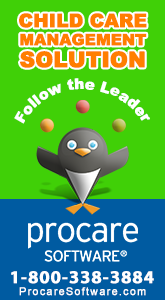ExchangeEveryDay Past Issues
 << Previous Issue
| View Past Issues | | Next Issue >>
<< Previous Issue
| View Past Issues | | Next Issue >> -John Lennon
In her book, Many Languages, One Classroom, Karen Nemeth offers principles such as these for supporting dual language learners in preschool classrooms:
Extend learning by maintaining themes for days at a time. "If you are doing an activity around water and fish — the child may begin to understand some basics. If you come in the next day and start talking about magnets — nothing from that child's learning the day before will be of use, and he will be back at square one trying to learn the words and concepts you are teaching..."
Use key word lists for each theme. Create and use these lists to learn relevant vocabulary in each child's language.
Repeat and emphasize important words in English. DLL children learn best when they hear simple vocabulary and short sentences. Try to use the same terms consistently for important things you really want the children to learn.
In classrooms across the country, teachers are encountering more children who are learning English, come from diverse backgrounds, and who speak a variety of languages. As challenging as this may be, a preschool teacher's goal remains the same: to welcome all children and give them the best possible start in education and in life. Even the most experienced teacher can feel a bit unsure about meeting the unique needs of children from different language backgrounds. Many Languages, One Classroom applies the latest information about best practices to all aspects of a preschool program. From using lists of keywords and visual aids to using body language and gestures, the strategies you will find in this book are adaptable and easy to put into practice. Designed to fit any preschool curriculum, Many Languages, One Classroom addresses state standards and benchmarks of standard quality programming.





Comments (2)
Displaying All 2 CommentsKnowlwdge Universe
Stoneham, United States
As a former ELL teacher, it helped me in my new endeavor as a preschool teacher to be equally alert about the needs of the infants as well as the parents. With my multi-cultural background, understanding families ' concerns and needs for their children is a major aspect. With the multi-cultural and linguistic diversity in our school in general and our classroom in particular, it gives us teachers, more challenges and more victories in teaching and excelling.
Knowlwdge Universe
Stoneham, United States
A well travelled teacher can basically understand not only the languages spoken in the classroom but the root of the cultural background of each student. This would permit the teacher to "homogenize" a diverse classroom in one cluster.
The children thus well understood and focused would end up happy to follow up with the curriculum, and their peers.
Post a Comment